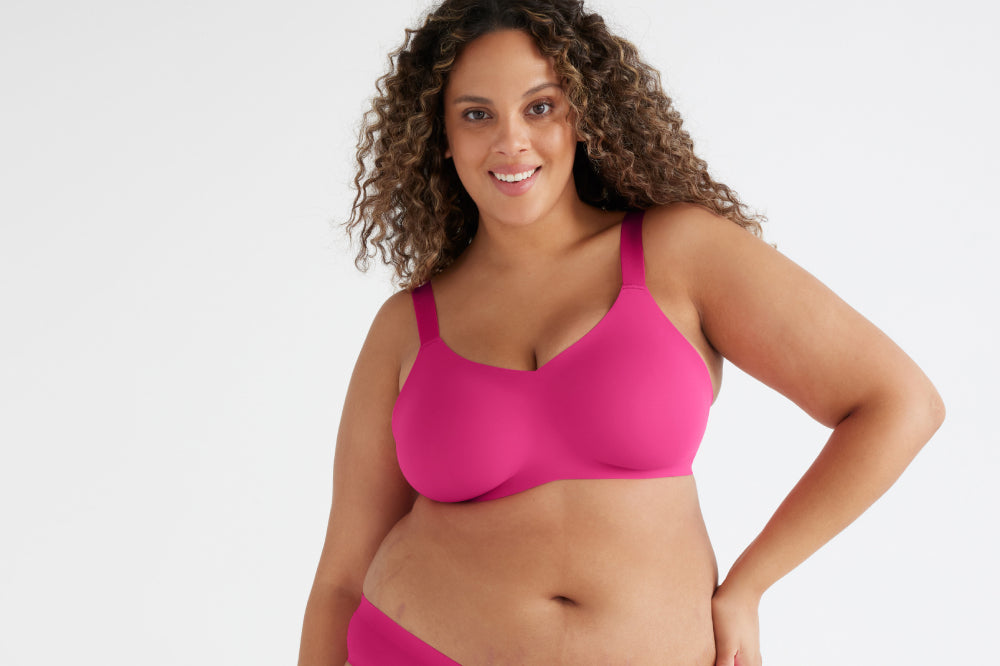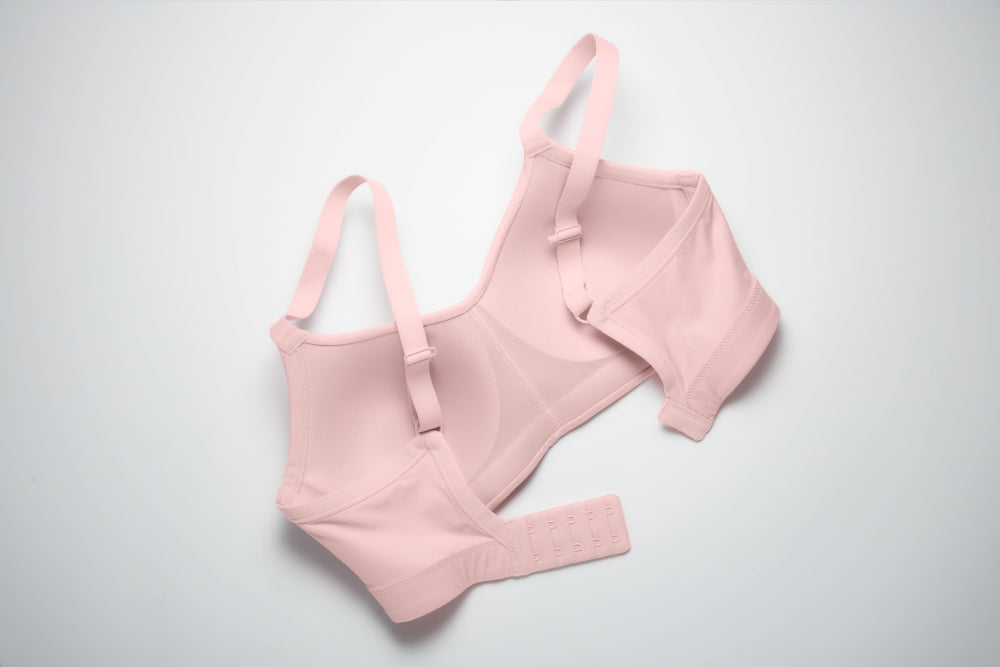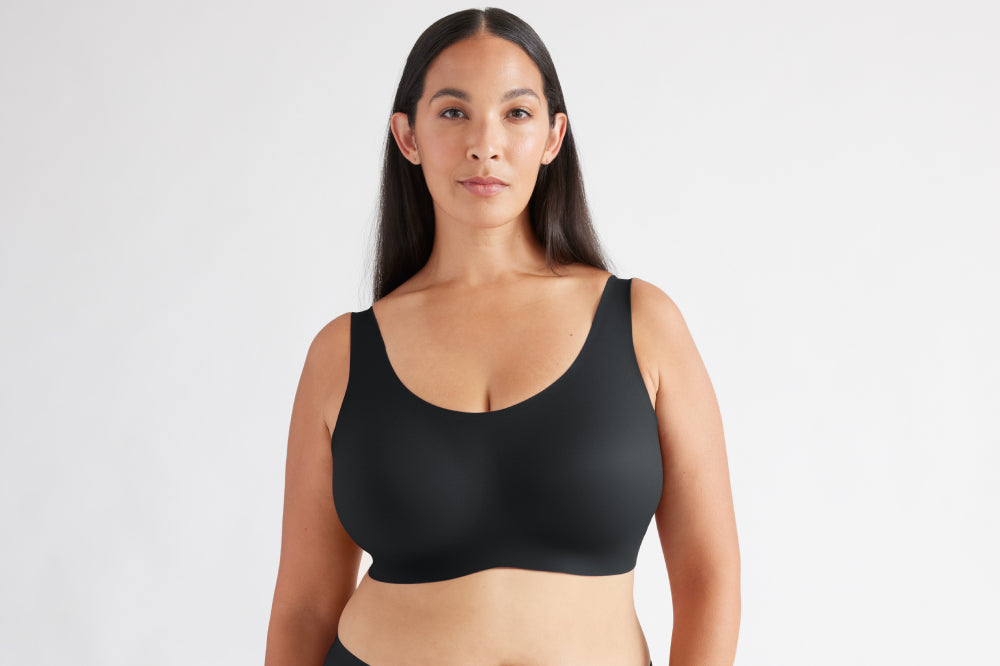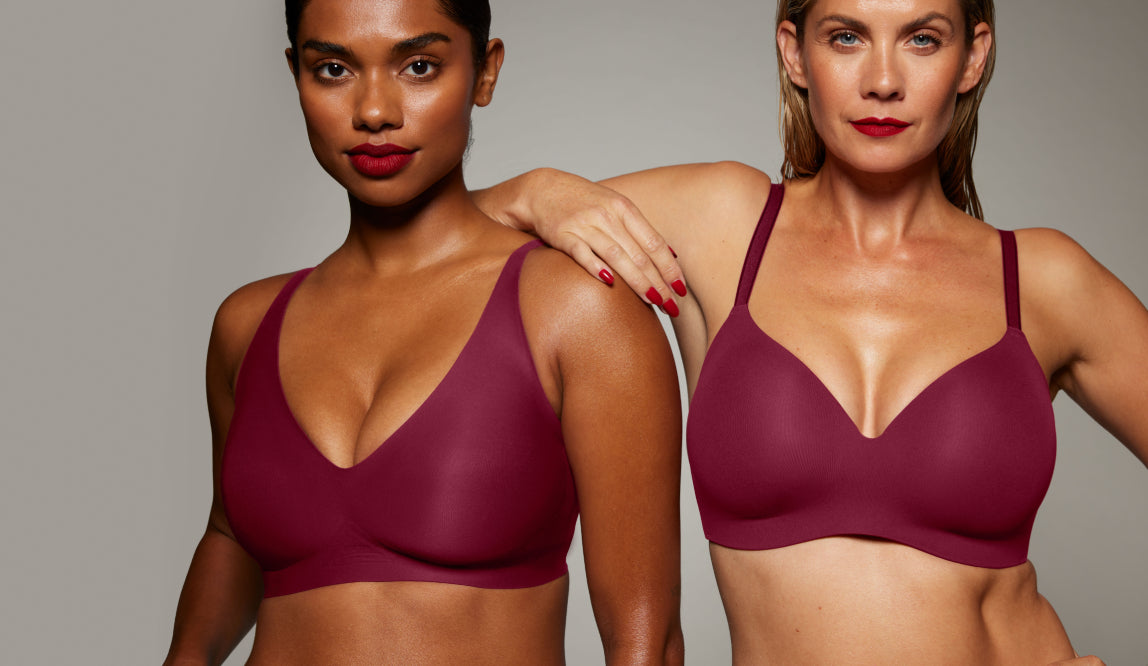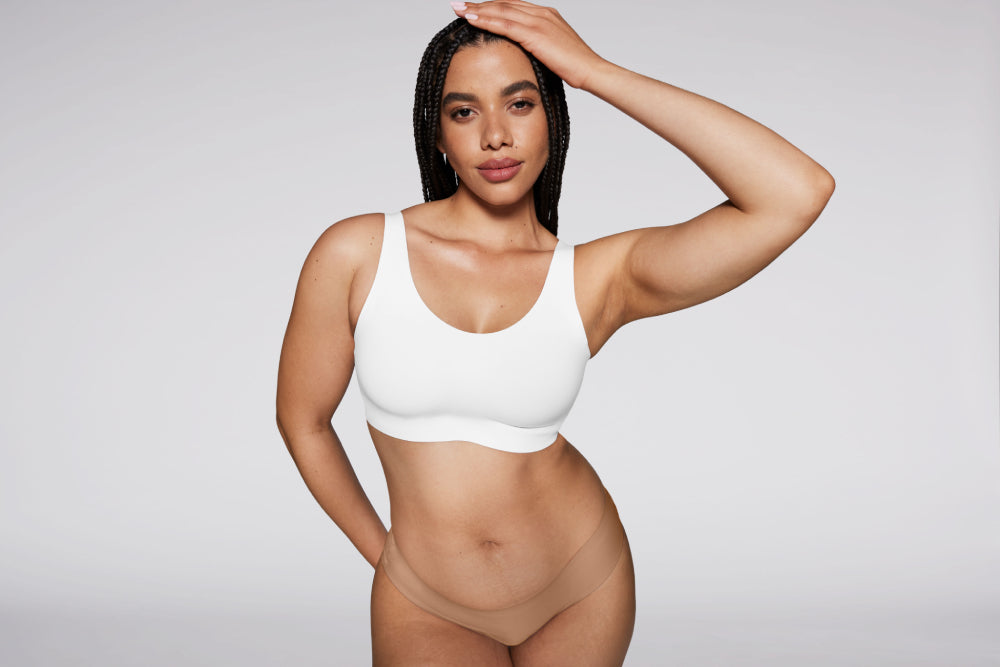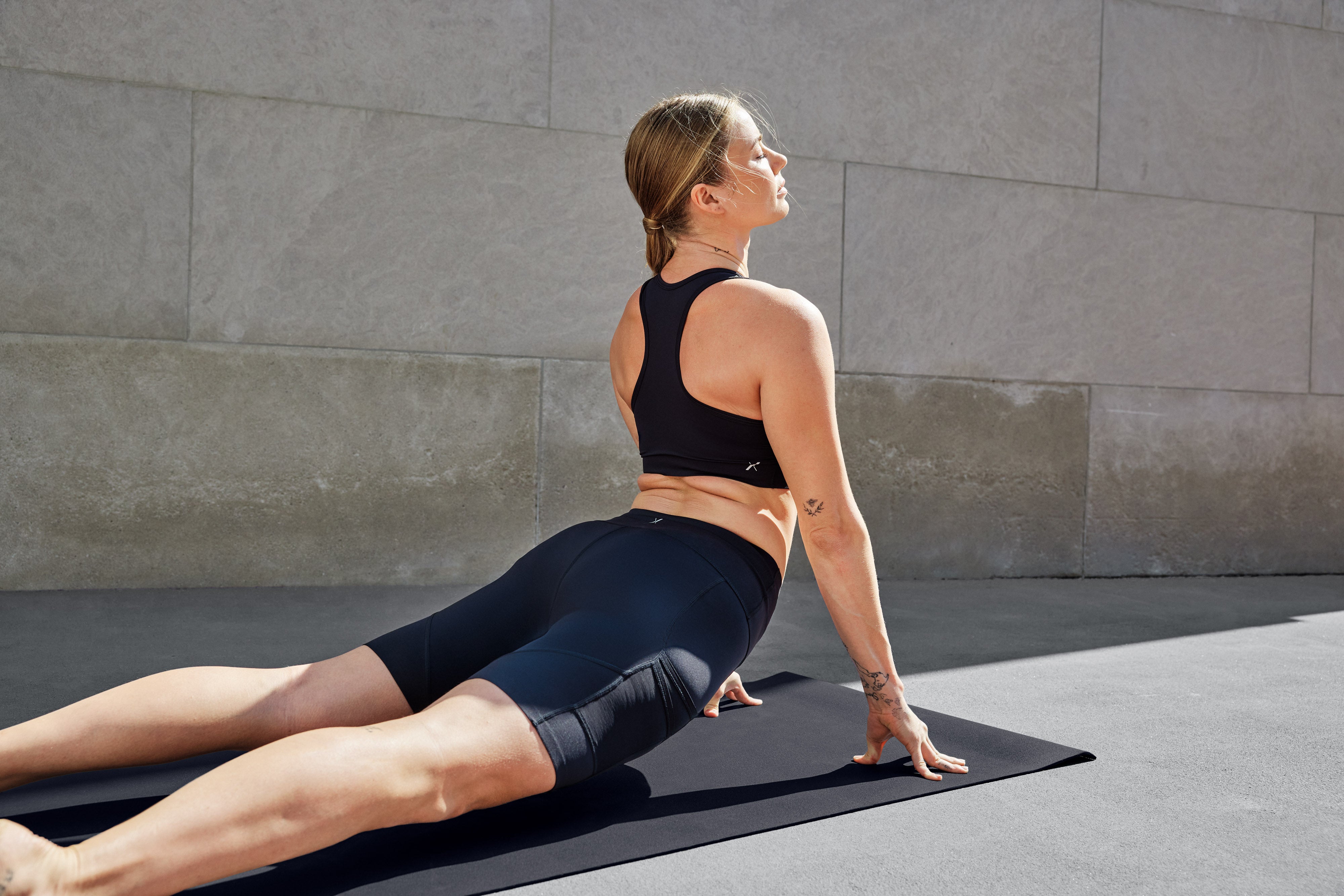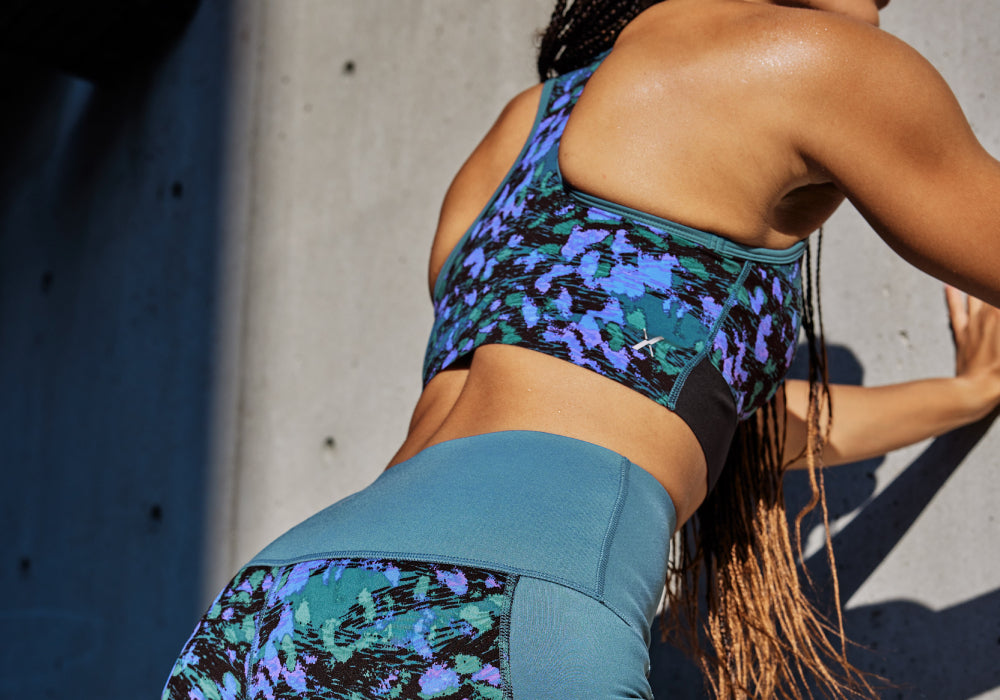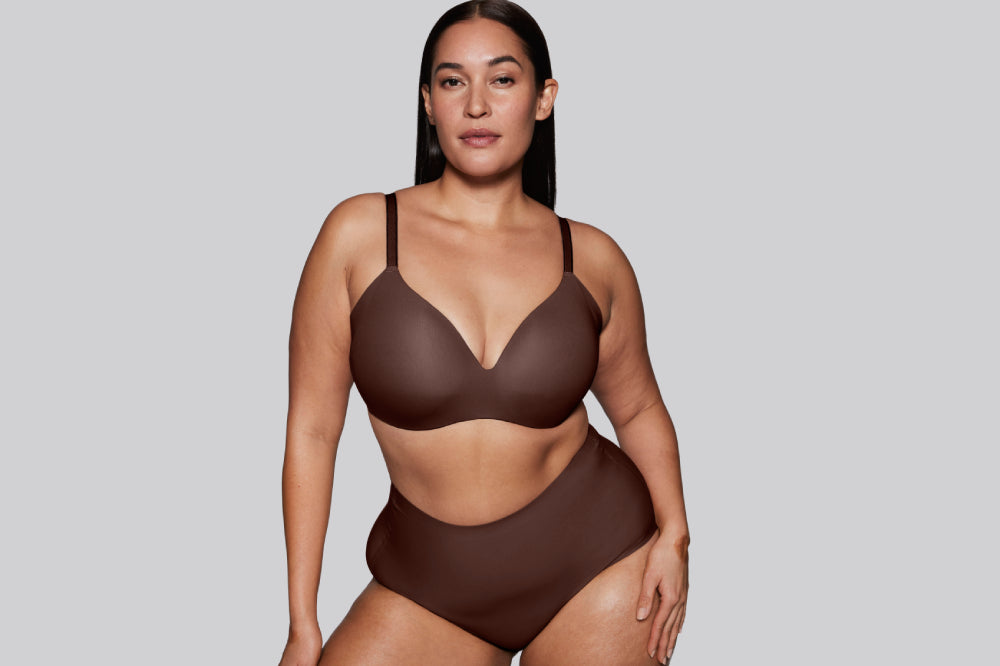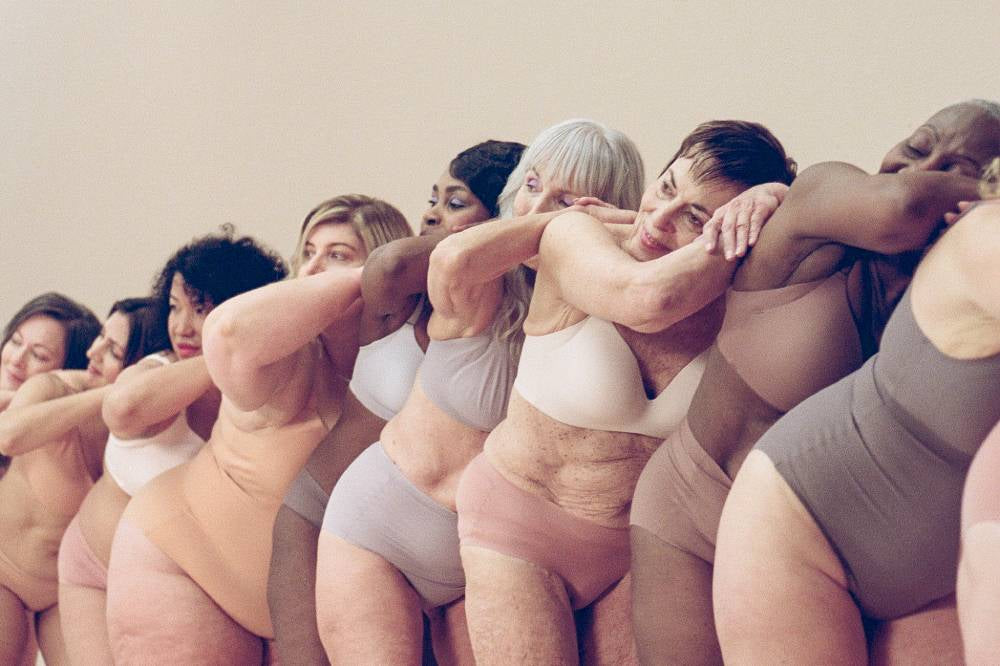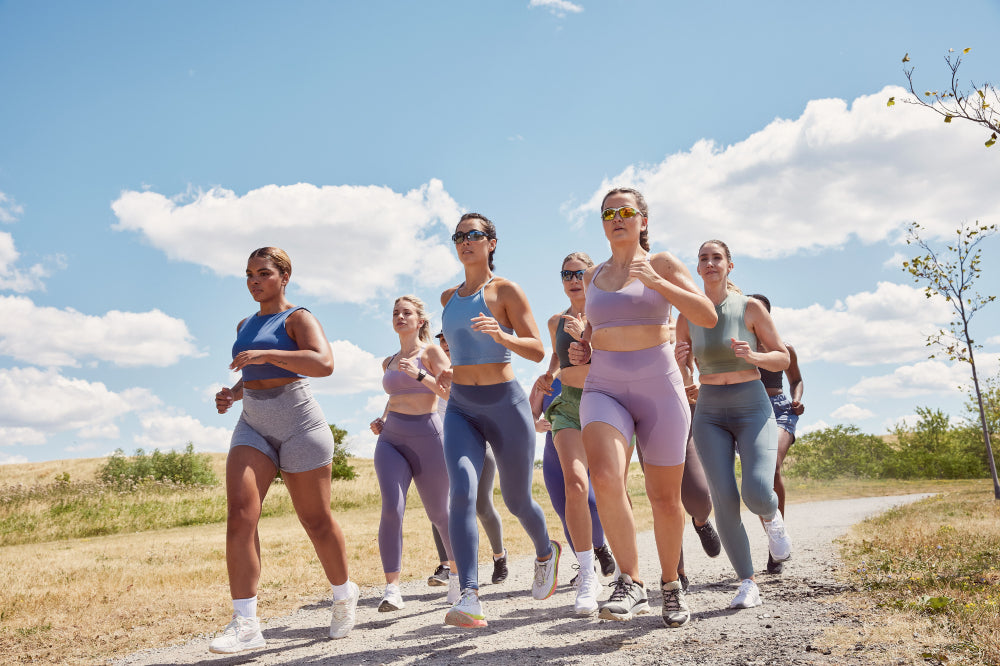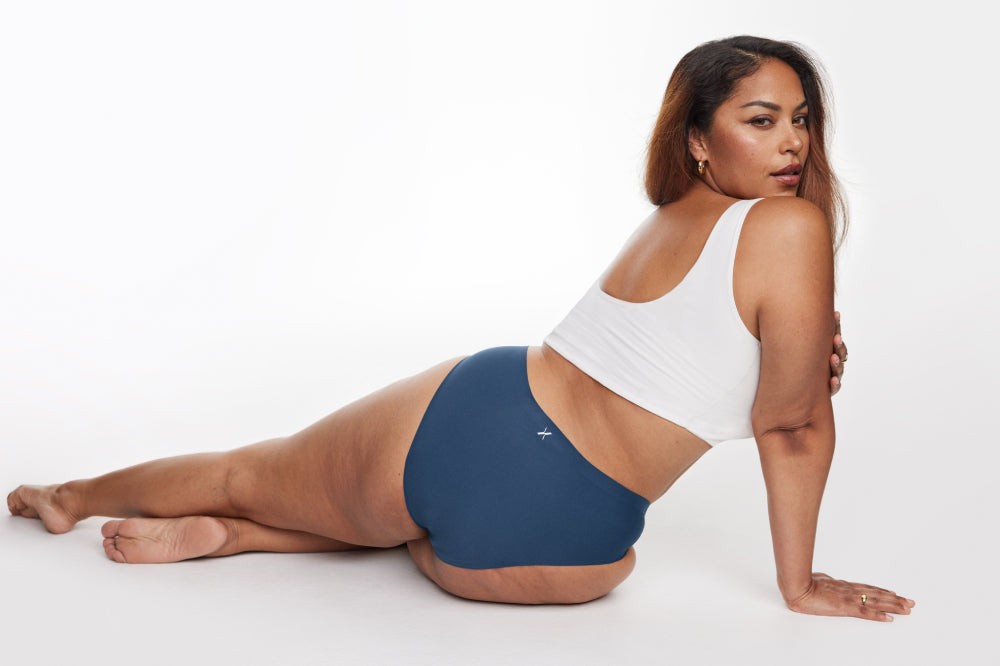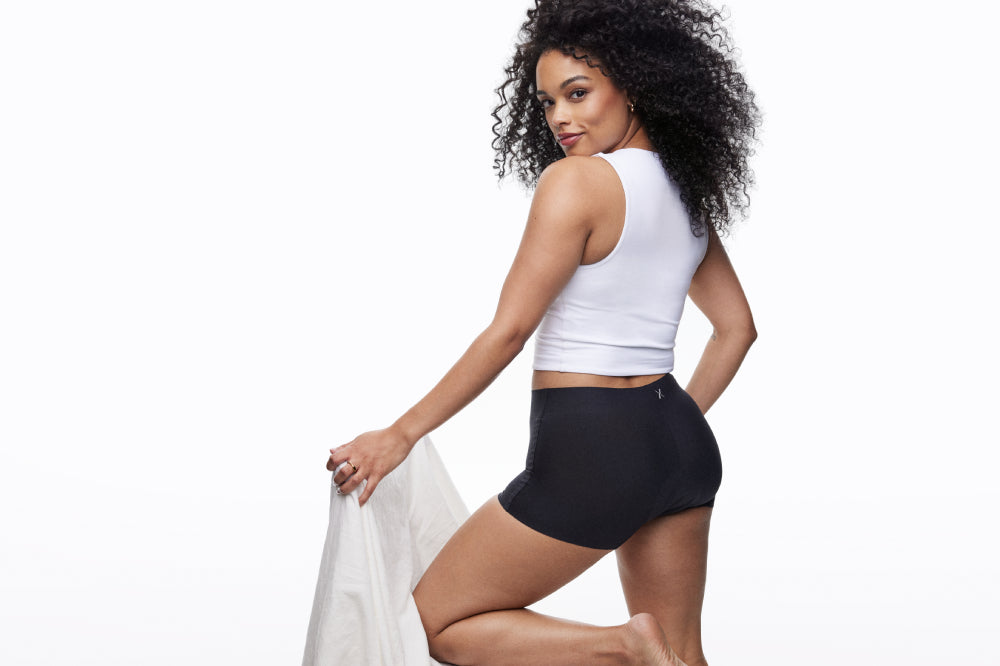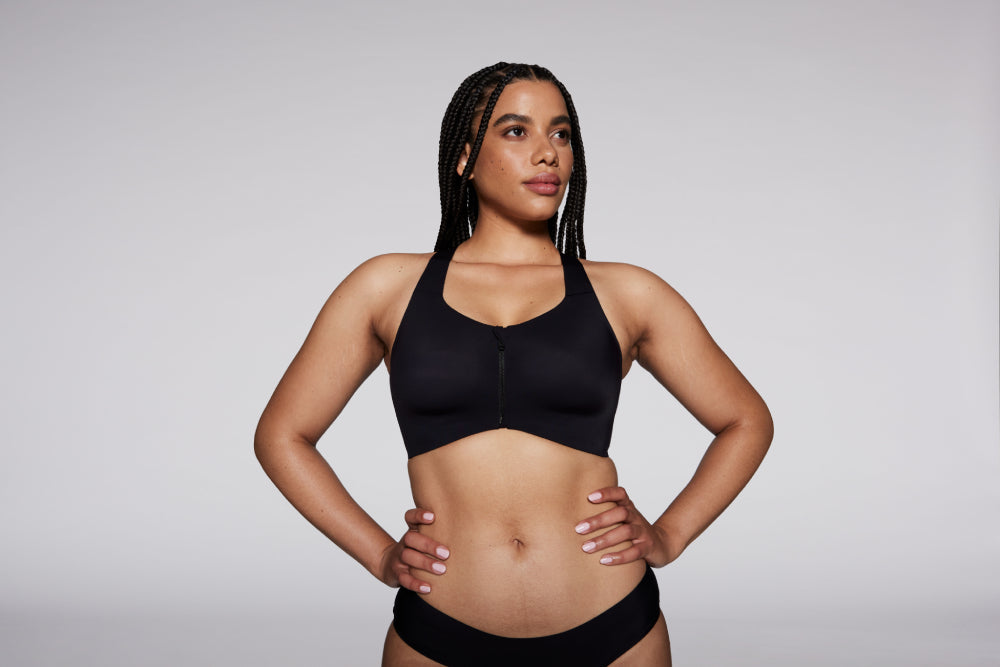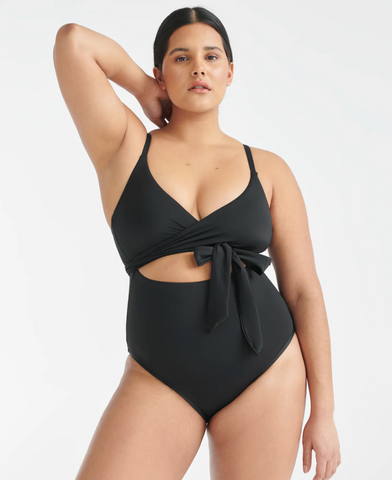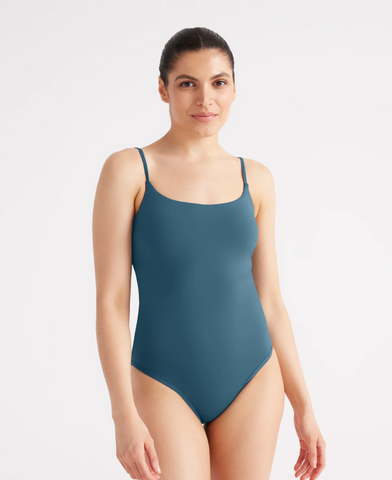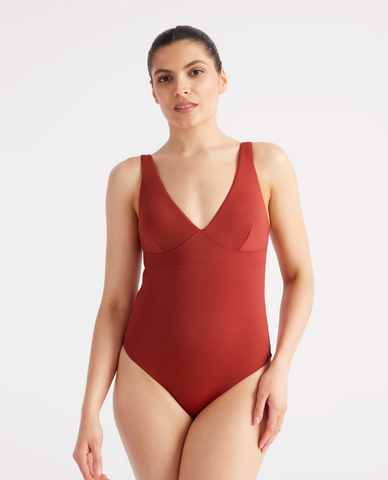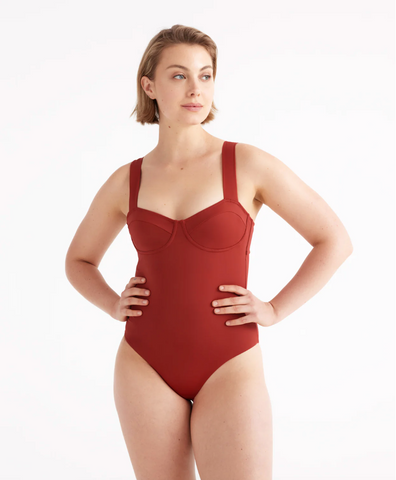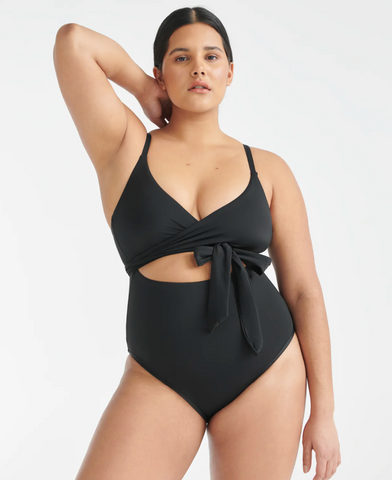If you’re anything like me, there are a few reasons why you may choose one bra over the other when you’re getting dressed.
I may reach for a sports bra because I’m heading for a workout class or another because I love the cute pattern, while another is more practical for the day’s outfit. But most of the time, it doesn’t cross my mind whether a bra is wireless or underwire, though it really should.
Underwire bras have a semi-circular metal wire (or plastic wire) sewn around the bottom and sides of each cup. This wire is usually sewn into the bra with extra fabric around it so that it feels more comfortable.
Underwire bras are meant to lift, separate, and hold the breasts in place and are often preferred by folks with larger busts or for a more defined look.
Unfortunately, underwired bras can also be rigid and uncomfortable, especially when they are not the right size. When your underwired bra isn’t fitted properly, the wires can dig into your ribs, breasts, and armpits. The band can squeeze your sternum or chafe along your shoulders.
6 Reasons Why You Might Not Love Your Underwire Bra
Let’s face it: underwire bras aren’t the comfiest underwear you can pull out of your lingerie drawer, but a few factors may be making it absolutely torturous to put on.
1. Underwires Can Be Inflexible
Remember how it used to be critical to take an outfit from day to night? Well, your underwire might not be as flexible. The rigid wires are meant to hold your breasts in place, meaning that going from meetings in the office to vacuuming your floors and playing with your dog might not be comfortable in the same bra.
Wearers often complain that underwire bras can feel restrictive, especially when you want to move around more freely. Most sports bras are wireless, with flexible fabrics that are much thicker and contain elastic, which makes them much easier to move around.
2. You're Wearing the Wrong Size
A stunning 80% of women are wearing the wrong size bra, according to a 2008 study. It’s extra painful when you’re wearing an underwire since the constrictive wires can squeeze and pinch the breasts, ribs, and even your armpits.
While the bra band doesn’t have any wires, it can be too tight and squeeze your ribs and sides if you’re wearing the wrong size.
If you’re experiencing any of the following, you may be wearing the wrong size bra:
- The underwire hurts your ribcage
- The band rides up your back
- Your bra leaves painful marks on your skin
- The straps slide off your shoulders, even after tightening them
- Your breasts bulge out of your cups or sides
- You’re uncomfortable
3. Your Bra Is Old
While the underwire should be securely sewn into the cups, regular wear and tear can cause the wires to poke through the fabric. If the underwire has become distorted or damaged, it won’t provide support and can dig into the body. Update your bra collection every twelve months and rotate your bras to get the most wear out of the ones you own.
Here are a few signs that your bra needs to be replaced:
- The band is stretched out, causing it to ride up.
- The underwire is poking out or won’t lie flat.
- The bra has lost its shape and support.
If any of the above are happening to your bra, it might be time to replace it.
4. Body Shape (Rib Shape or Weight Changes)
Your underwire bra may be digging into your ribs for a few reasons. Some folks have more prominent ribs, also known as rib flares, which can make wearing an underwire challenging. Since most underwire bras are meant to sit flush against the sternum, their naturally protruding ribs can push and rub against the wires.
It’s normal for your body to change throughout your life: aging, having children, illness, and gaining or losing weight can all impact your breast size and shape. For all these reasons (and more!), you may change your bra size. And that’s totally ok! There is no ideal size, just the size that makes you feel great, supported, and comfortable in your clothes.
5. Breast Shape
Understanding your breast shape is pretty important when choosing your bra. You may have more breast tissue at the bottom of your breast (giving you a teardrop shape) or less breast tissue altogether (athletic or shallow). While your breasts change throughout the hormonal cycle and your life, you can get a good sense of the seven most common breast shapes.
A few breast shapes that may be less suited for underwire bras are:
- Asymmetrical breasts
- East-west breasts
- Shallow breasts
You’ve probably heard the expression; breasts are sisters, not twins. According to one study, it’s quite common to have some degree of breast asymmetry, basically where one breast is noticeably larger or a different shape than the other.
Wearing an underwire can be challenging for someone with asymmetrical breasts since the underwire won’t be able to accommodate the different sizes and shapes. It may feel like you’re wearing the wrong size bra on one cup while fitting on the other. The rigid wires can dig into the larger breast or rub and chafe in places where the cups are too big.
Breasts and nipples that point outwards are often referred to as east-west or wide-set breasts.
Shallow breasts tend to have a larger base, meaning the breast tissue extends further along the chest and closer to the other breast.
6. High Maintenance
If you’re used to throwing your bra into the wash with all the rest of your clothes, then maintaining an underwire bra might feel like a lot of extra work. It’s generally recommended to hand wash underwire bras and line-dry them.
Underwire bras should receive a little extra love from gentle detergents or even specialty lingerie detergents to help preserve the elasticity. Since they can get caught or snagged in the washing machine, it’s best to be extra gentle with them. Heat from the dryer can also weaken the elasticity or damage the underwire.
Rotating your bras and switching between a few different types of bras and styles can help maintain them.
But Underwire Bras Do Have Some Advantages
Despite some of the gripes associated with underwire bras, they come in clutch when you need extra support (especially for ladies with larger breasts) or want to have a beautifully defined shape.
Sewn under and along the sides of each cup of these bras is a thin metal wire that lifts and separates the breasts. If you have a larger cup size, you know the wire will be holding you up, whereas, with other types of bras, you’ll have to be more choosy and conscious of fabric and style to get the same level of support.
Acting like a frame, it lifts up and evenly distributes the weight, meaning less pressure on your shoulder straps.
A blessing and a curse, those rigid wires keep everything propped and in place, meaning you’ll feel secure when you should feel super secure when you’re moving around. Previously, underwire bras were the gold standard for achieving that extra oomph when lifting and separating. Thanks to new technology and innovative designs, Knix’s wireless bras can support and sculpt, without a painful wire.
Dispelling Underwire Bra Myths:
You may be wondering, are underwire bras harmful? Especially if you've heard any of these myths and misconceptions. But they're generally considered safe and supportive, so it's a personal preference whether you choose to wear one or not.
Underwire Bras Cause Breast Cancer
Let's set the record straight: wearing a bra won't increase your breast cancer risk. There's no scientific evidence that suggests a direct link between wearing underwire bras and an increased risk of breast cancer.
The idea that underwire bras might contribute to breast cancer has been a topic of discussion for many years, but research has not supported this claim.
The reasons for developing breast cancer are complex, including genetics, hormones, environment, and lifestyle, but it's important to stress that your underwear preference isn't a factor.
Underwire Bras Cause Breast Sagging
Throughout our lives, our breasts will change! Aging, pregnancy, breastfeeding, weight loss, and surgery may change the volume and tone of your breasts. That's completely normal. Wearing an underwire bra (or not) won't contribute to breasts sagging or changing. It may even help provide extra support and lift!
Underwire Bras Hinder Lymphatic Drainage
Underwire bras can be constrictive, especially if you're wearing the wrong size, but there's no evidence that it will stop lymph fluid or impact the lymphatic system.
4 Reasons to Try a Wireless Bra
In an argument, wire-free bras (also known as soft cup) will always win on comfort compared to underwire bras. While underwire bras used to be preferred for lift and fit, wireless has come a long way. With new technology, beautiful styles and shapes, and obviously, the most comfortable fit, a non-wired bra is kind of a no-brainer.
While you’ll always be uncomfortable wearing the wrong size, wireless bras won’t have the opportunity to dig into your sides or squeeze you in all the wrong places. Here are a few reasons why non-wired bras may be the right bra for you:
1. Technology Has Come A Long Way
Wireless bras use high-performance fabrics, such as microfiber blends and moisture-wicking materials, which make them more comfortable and breathable. There are also so many ways to add support structures in wireless bras.
Some bras incorporate thicker materials or integrated support bands that mimic the lift and support traditionally associated with underwires without the discomfort of rigid wires.
2. Next Level Comfort
Wireless bras are made from flexible fabrics and form-fitting shapes. They are much more comfortable moving in and less restrictive than rigid underwire bras. Since they lack the wires that characterize the underwire bra, there’s no fear of being pinched or prodded by an errant bit of metal or squeezed by the confining shape.
Many more wireless bras are changing to a seamless structure, which minimizes irritation and provides a smoother feel against the skin, eliminating the discomfort associated with seams and stitching.
3. Good Support & Shape
Wireless bras have undergone significant innovation in recent years, providing shaping and lift without wires. This includes strategic paneling, built-in structures, and 3D knitting technologies.
Built-in reinforcements like molded cups, side panels, and under-bust bands provide support and shaping without relying on an underwire. By incorporating these elements into the bra's construction, designers can create a supportive framework that lifts and supports the bust, enhancing comfort and confidence.
4. Many Styles to Explore
Depending on your mood, style, or how much activity you plan on getting up to in a day, a wireless bra is perfect for you. Here are a few popular types:
-
Padded Wireless Bra: have additional padding in the cups for added shape, support, or modesty.
-
Non-padded Wireless Bra: these lack padding in the cup for a more natural look.
-
Seam-free Wireless Bra: designed without seams on the cups, these are ideal for wearing under-fitted or thin fabric, as they eliminate the risk of seams showing through.
-
Sports Wireless Bra: these provide extra support during physical activity with the help of wide straps, a supportive band, and moisture-wicking fabric.
Knix Wireless Bras: Discover the Best Bra for You
With that in mind, here are three top recommendations for different bra styles for different kinds of wearers and needs.
Best Wireless Bra for High Support: Catalyst Sports Bra
The Catalyst Sports Bra is the most supportive sports bra you’ll put on. Drastically reducing breast movement, the Catalyst outperformed over 800 bras it was tested against! And no more struggling to get it off after a sweaty workout; easily unhook the back clasps instead of struggling to squirm out of it.
What reviewers say:
“I love the colors, and the support was amazing. I highly recommend it.
It has loved everything I have got from Knix: amazing support with no wires. Super comfortable!”
“This sports bra offers a great amount of support for when you're working out! You don't have to worry about spillage or anything! It's soft, smooth, and comfortable!”
Best Bra for Day to Night: Wingwoman Contour Bra
Who doesn’t want to look and feel sexy while also having a bra that fits and functions under their everyday clothes? Well, the WingWoman Contour Bra does just that, with a plunging neckline and molded cups for cleavage and extra side coverage to eliminate any side boob. It’s the best of both worlds!
What reviewers say:
“The support and comfort is unreal. Give it a few wears as it is snug at first, but then, honestly, it sculpts to you, and I don’t even feel it on. I’m never returning to wired bras.”
“This bra is so comfortable, which I have a hard time finding. I am one of those people if I don’t have to wear one, I won’t! But this bra I can keep on all day. And it doesn’t make your boobs look weird either. Love it!”
Comfiest Bra for WFH: Good to Go Seamless Bra
The Good to Go Seamless Bra fits with the comfort of a tank top but provides the support of a sports bra. The seamless design won’t show through to tight t-shirts or clothes over the top.
What reviewers say:
“I was nervous about ordering anything online as my sizing has changed drastically over the last year and a half. I bought this bra, just why not? And honestly, it's my favorite. It's the most comfortable thing I've ever had supporting me.”
Time to Make the Switch
Are underwire bras bad? Absolutely not. If you're in pain when wearing one, you’re probably just wearing the wrong size. Ultimately, the bra you wear is your preference, and if one style or design suits you better, that's what is important.
Your lingerie drawer should have a variety of bras for all types of occasions, activities, and moods! Rotate between wired, underwired bras, nudes, and frilly depending on your needs and clothes for the day. But if comfort is your main concern, our vote is for wireless.
]]>









